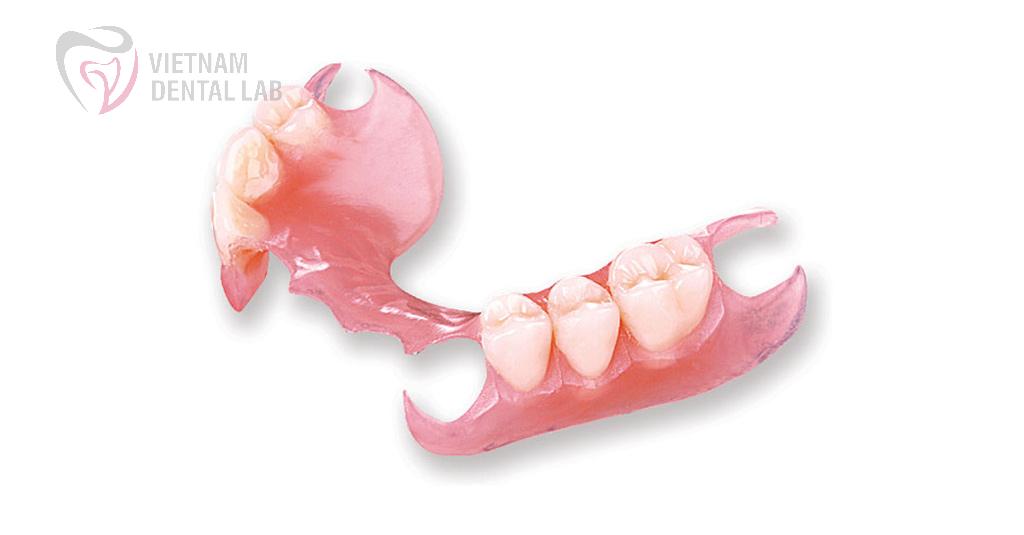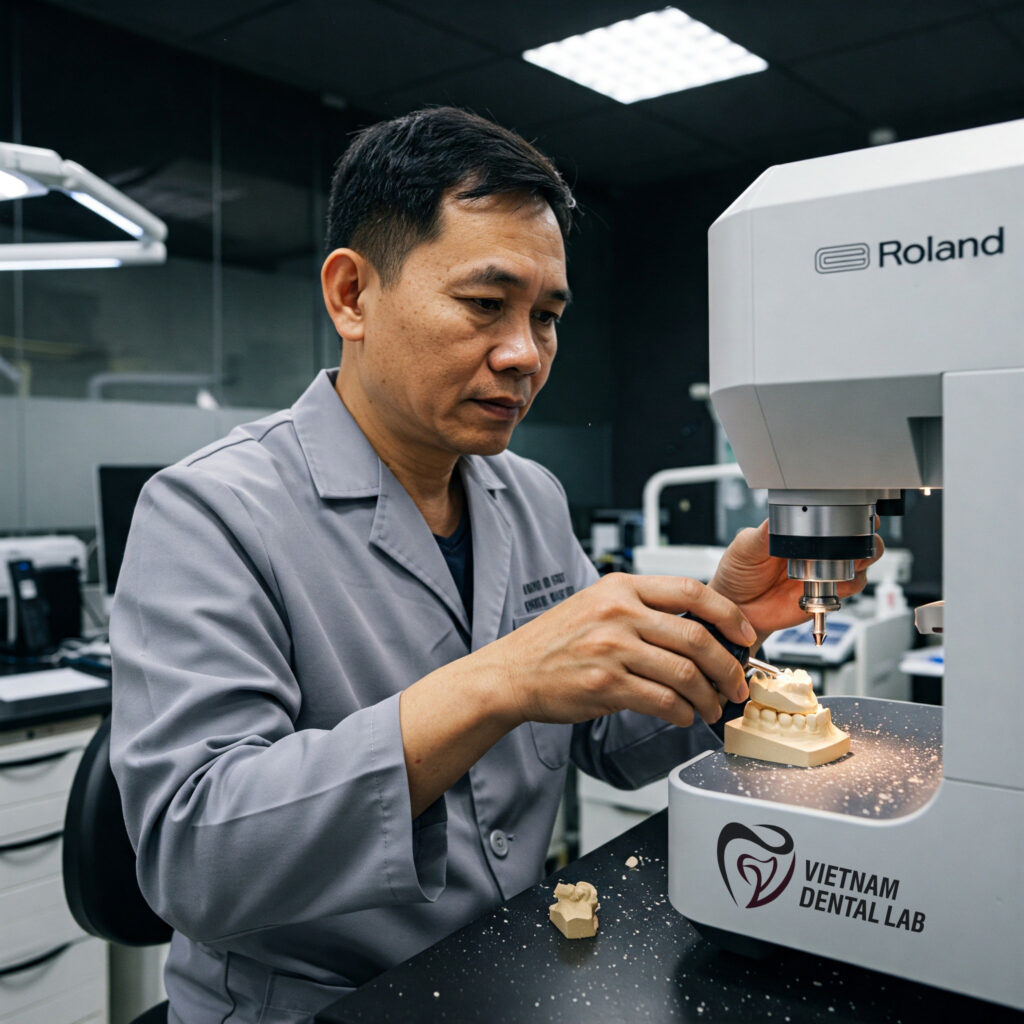In the landscape of modern prosthodontics, patient demand for aesthetic, comfortable, and metal-free solutions has never been higher. While traditional acrylic and cast metal partials have been the standard for decades, the evolution of dental polymers has introduced a superior alternative for many clinical situations: flexible dentures. These advanced removable prosthetics offer a unique combination of strength, flexibility, and biocompatibility that addresses many of the shortcomings of their rigid predecessors.

For dental practices aiming to provide state-of-the-art care, understanding the nuances of flexible partial dentures is no longer optional—it’s essential. This comprehensive guide is designed for clinicians, providing a deep dive into the material science, ideal clinical applications, contraindications, and the streamlined digital lab workflow behind creating these remarkable restorations. Partnering with a knowledgeable dental lab is key to unlocking their full potential, ensuring predictable outcomes and elevated patient satisfaction.
What Exactly Are Flexible Dentures? A Material Science Perspective
At its core, a flexible denture is a type of removable partial denture (RPD) crafted from an advanced thermoplastic material, most commonly a form of high-performance polyamide, also known as nylon. Unlike traditional dentures that rely on a rigid polymethyl methacrylate (PMMA) acrylic base and conspicuous metal clasps for retention, flexible dentures leverage the inherent, resilient flexibility of their base material to engage undercuts and secure the prosthesis in place.
The Science Behind the Flex: Thermoplastic Polyamides
The materials used for flexible dentures are a world away from conventional acrylics. They are pre-packaged, single-component materials that are processed under high heat and pressure, eliminating the polymerization process involving a liquid monomer and a powder polymer.
Key properties of these advanced thermoplastics include:
- Monomer-Free and Biocompatible: The absence of free monomer makes flexible dentures an excellent solution for patients with known allergies or sensitivities to acrylic resins. This biocompatibility significantly reduces the risk of tissue irritation and allergic reactions.
- High Impact Strength: Despite their flexibility, these materials are virtually unbreakable under normal use. They can withstand significant stress and impact without fracturing, a common issue with brittle acrylic bases.
- Low Water Absorption: Quality thermoplastic nylons exhibit minimal water absorption, which makes them highly resistant to staining and odor absorption over time. This contributes to better long-term hygiene and aesthetics.
- Lightweight Construction: Flexible partials are significantly lighter than their acrylic and metal-framework counterparts, leading to enhanced patient comfort and faster adaptation.
The Metal-Free Advantage
The most visually striking benefit of flexible dentures is the elimination of metal clasps. The clasps are an integrated part of the denture base, fabricated from the same translucent, pink thermoplastic material.
- Superior Aesthetics: These tissue-colored clasps blend seamlessly with the patient’s natural gingiva, rendering the prosthesis nearly invisible in the mouth. This is a major advantage for anterior cases where aesthetics are paramount.
- Enhanced Patient Comfort: Metal clasps can be rigid and sometimes cause discomfort or wear on abutment teeth. Flexible clasps are gentler on teeth and surrounding tissues, distributing forces more evenly and comfortably.
Clinical Deep Dive: Valplast® vs. DuraFlex™ vs. Traditional Acrylic
While “flexible denture” is a broad category, the specific material chosen by the dental lab has a direct impact on the final restoration’s properties. Two of the most recognized and clinically proven materials in this space are Valplast® and DuraFlex™. Understanding their differences, as well as how they compare to traditional acrylic/metal RPDs, allows clinicians to make the most informed decisions for their patients.
Valplast®: The Original Flexible Standard
Valplast, based on a super-polyamide nylon resin, has been a trusted name for decades. It is renowned for its exceptional flexibility, allowing it to navigate complex undercuts with ease. It is often considered the most “flexible” of the flexibles, making it ideal for cases where a high degree of adaptation is needed. Its signature pink shades are designed to blend well with a variety of gingival tones.
DuraFlex™: The Crystalline Innovator
DuraFlex is crafted from a microcrystalline polyamide, which gives it a slightly more rigid structure compared to Valplast while still retaining significant flexibility. This added firmness can provide a greater sense of stability for some patients. DuraFlex is also known for its excellent stain resistance and is available in a wider range of tissue shades, including a clear option, making it exceptionally versatile for aesthetic applications.
To provide a clear clinical overview, here is a direct comparison:
| Feature | Flexible Partials (Valplast® / DuraFlex™) | Traditional Acrylic/Metal RPD |
| Base Material | Thermoplastic Nylon / Polyamide | PMMA Acrylic and Cobalt-Chrome |
| Retention | Flexible, tissue-colored clasps | Rigid metal clasps (e.g., Co-Cr) |
| Aesthetics | Excellent; clasps are virtually invisible | Poor to fair; metal clasps are often visible |
| Comfort & Weight | Lightweight and comfortable | Heavier and more rigid |
| Biocompatibility | Excellent; monomer-free, ideal for allergies | Potential for acrylic monomer sensitivity |
| Durability | High impact strength; virtually unbreakable | Brittle acrylic can fracture; metal is strong |
| Adjustability | Requires special burs and techniques | Easily adjusted and polished chairside |
| Repair & Reline | Difficult to impossible to reline; repairs are complex | Easily repaired, relined, and added to |
| Stain Resistance | Good to excellent | Fair; can be porous and absorb stains/odors |
Indications and Contraindications: Selecting the Right Case
The success of a flexible partial denture is heavily dependent on proper case selection. While they offer superb solutions for many patients, they are not a universal replacement for all removable prosthetics.
Ideal Clinical Scenarios for Flexible Dentures:
- Replacing 1-3 Teeth: They excel as unilateral or bilateral partials where aesthetics are a primary concern, especially in the anterior region.
- Patients with Allergies: The go-to choice for individuals with a known allergy to acrylic monomers or various metals used in cast frameworks.
- Transitional or Interim Prosthetics: They serve as durable and highly aesthetic temporary solutions while a patient waits for implants to integrate or for other definitive treatment.
- Presence of Anatomical Challenges: Patients with large or irregularly shaped maxillary or mandibular tori can often wear flexible partials more comfortably than rigid ones.
- As an Alternative to Nesbit Partials: For single-tooth replacement, a flexible unilateral partial is often more comfortable and less mechanically stressful than a traditional rigid Nesbit appliance.
- Patients with a History of Denture Fracture: Their inherent durability makes them a reliable choice for patients who are hard on their prosthetics.
When to Reconsider (Contraindications):
- Need for Rigidity and Support: In long-span, free-end saddle cases (Kennedy Class I & II), a traditional cast metal framework is superior as it provides necessary support via rests on abutment teeth, preventing tissue compression. Flexible partials are entirely tissue-borne.
- Limited Vertical Clearance: Insufficient occlusal clearance can make it difficult to achieve adequate material thickness and strength.
- Poor Periodontal Health: Abutment teeth must be periodontally sound, as the prosthesis relies on them for stability and retention.
- Anticipated Need for Future Additions/Relining: Due to the nature of the thermoplastic material, adding teeth or performing a simple reline is extremely difficult and often not recommended. If significant ridge resorption is anticipated, a traditional acrylic partial may be a more practical choice.
The Digital Lab Workflow: Precision from Scan to Finish
Modern dental laboratories like Vietnam Dental Lab have revolutionized the fabrication of flexible dentures by integrating a fully digital workflow. This process enhances precision, reduces turnaround times, and improves communication between the clinic and the lab.
Step 1: The Impression – Digital is Preferred
The foundation of any great restoration is a flawless impression. While high-quality PVS impressions are acceptable, an intraoral scan is the superior starting point. A digital scan captures the hard and soft tissues with exceptional accuracy, eliminates voids and drags, and allows for instant transmission to the lab. For flexible partials, the scan should include the full arch, opposing arch, and a bite registration.
Step 2: Digital Design (CAD)
Once the scan file is received, our skilled technicians import it into advanced dental design software (like 3Shape or Exocad). Here, every aspect of the flexible denture is virtually designed:
- The denture base is precisely adapted to the patient’s tissue.
- The path of insertion is determined to ensure the prosthesis seats easily while maximizing retention from undercuts.
- The tissue-colored clasps are meticulously designed for optimal grip without impinging on the gingival margin.
- The teeth are set in the ideal occlusal scheme.This digital design can be shared with the clinician for review and approval before any physical manufacturing begins, ensuring complete collaboration.
Step 3: Manufacturing – 3D Printing & Injection Molding
With the design finalized, the manufacturing process begins.
- 3D Printed Try-In/Framework: A highly accurate model of the denture design is first 3D printed in a specialized resin. This allows for a physical try-in to verify fit and aesthetics if required by the clinician.
- Investment and Burnout: The 3D printed pattern is invested in a special flask, similar to the lost-wax technique. The flask is then placed in a burnout furnace, which cleanly vaporizes the resin pattern, leaving behind a precise negative mold.
- Thermoplastic Injection: The flask is then attached to a high-pressure injection molding machine. The chosen thermoplastic material (e.g., Valplast or DuraFlex) is heated to its melting point and injected under precise pressure into the mold, ensuring a dense, void-free denture base.
Step 4: Finishing, Polishing, and Quality Control
After the injection process, the denture is carefully divested from the investment. Our technicians then perform the final finishing by hand and with specialized tools. This involves:
- Trimming any excess material.
- Characterizing the gingival areas for a more natural appearance.
- Polishing the entire surface to a high-gloss finish using specific compounds designed for thermoplastics. This hyper-polished surface is crucial for resisting plaque and stain accumulation.
- Finally, the restoration undergoes a rigorous quality control check to ensure it matches the digital design and fits the master model perfectly.
Partner with Vietnam Dental Lab for Superior Flexible Restorations
Flexible dentures represent a significant advancement in removable prosthodontics, offering an unparalleled blend of aesthetics, comfort, and durability that modern patients desire. Success with these restorations, however, is a collaborative effort, hinging on precise clinical work and the expertise of a technologically advanced dental laboratory.

At Vietnam Dental Lab, we have embraced the full potential of the digital workflow to produce flexible partial dentures with unmatched accuracy and consistency. Our team of experienced technicians understands the unique properties of materials like Valplast® and DuraFlex™, ensuring that every case is designed and fabricated to the highest clinical standards.
Elevate your practice and provide your patients with the best in modern removable solutions. Contact our expert team today to discuss your next case or to learn more about our digital dental lab services.
